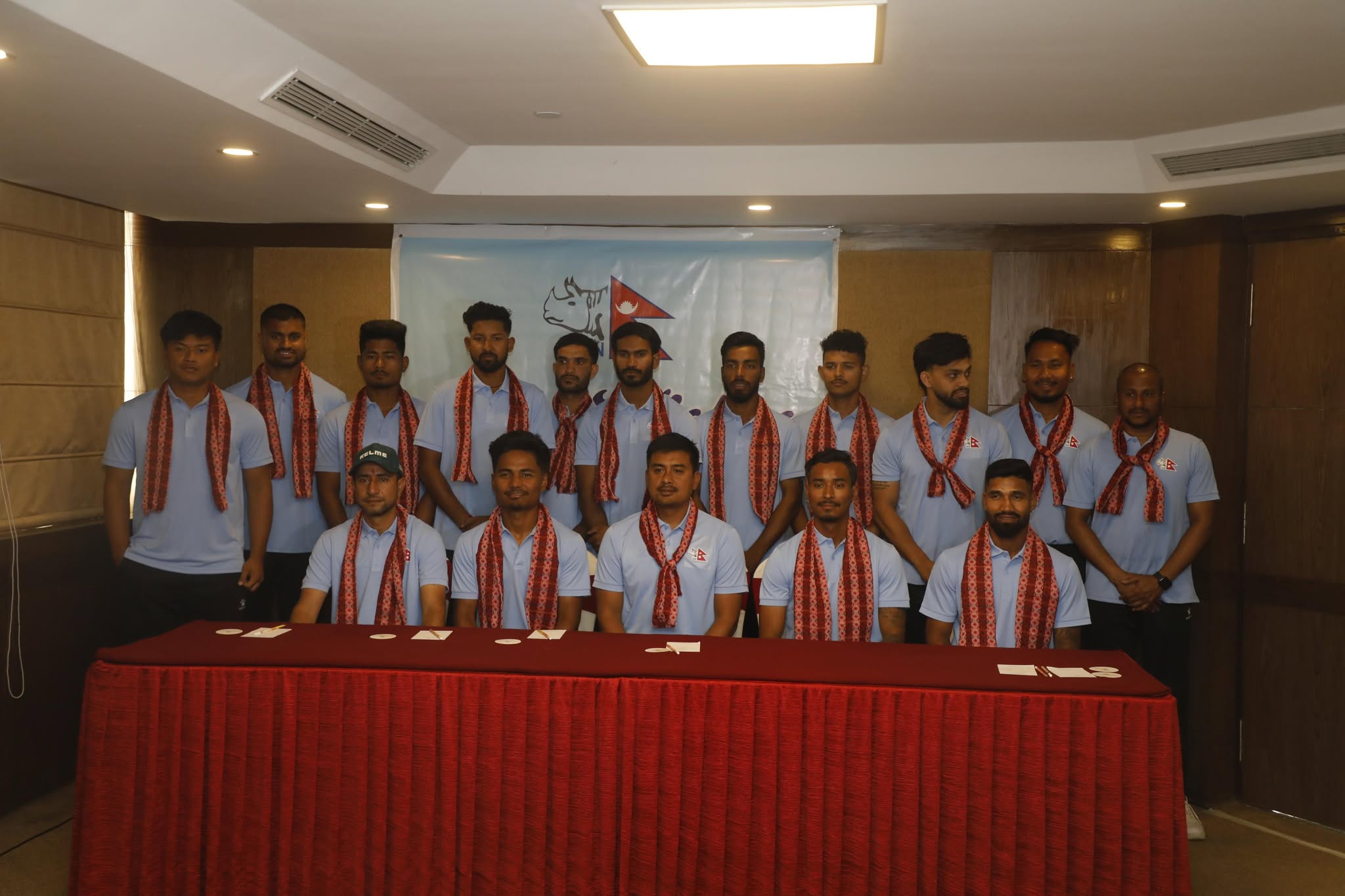
Broughton Coburn of Wilson, Wyoming has worked in conservation and development projects in Nepal, Tibet and India for the four decades, for a variety of international agencies. In Nepal, he worked for the establishment of the Annapurna Area Conservation Project (ACAP), which attracts thousands of tourists, domestic and foreign, every year.
Ahead of the government’s ambitious Visit Nepal Year 2020, Coburn recently spoke to Onlinkhabar about his time in ACAP and how conservation areas in Nepal are facing an uncertain future.
Excerpts:
How did you get into ACAP?
I came to Nepal as a Peace Corps volunteer and was posted in Syangja, where I lived with an elderly Gurung woman, and wrote two books about her life. Then I got the chance to work with the Agriculture Department’s Division of Soil Science on a USAID-funded project in which we explored the potential for biogas (gobar gas). I played a small role in that, but am proud to say that there are nearly 200,000 operating, self-sustaining gobar gas plants in Nepal, now. I also worked with UNESCO in Sagarmatha National Park.
What were your first works in conservation?
I became associated with King Mahendra’s Trust for Nature Conservation (later renamed the National Trust for Nature Conservation), and ACAP was one of their lead projects. This ambitious effort resulted in Nepal’s first “conservation areas”, and was gazetted in 1988. Again, I played a small role, and need to give a big shout out to Dr. Hemanta Raj Mishra, Dr. Chandra Prasad Gurung, and Dr. Mingma Norbu Sherpa. Chandra and Mingma and I toured the Annapurna region, gathering information and speaking with villagers and village leaders. We then started looking at various development plans and objectives. Tragically, Chandra and Mingma were killed in the devastating helicopter crash in the Kanchenjunga Conservation Area a number of years ago.
Looking at it now, aren’t you disappointed that it doesn’t run with the same values as it did back then?
I would say that as ACAP has grown, it has become a bit bureaucratic, and is not operating at the same level of motivation and energy it once had. But this can happen as any organization grows and matures, and eventually ages. Perhaps it is time to re-design or re-configure it, to address the changing economic and environmental situations in Nepal — and breathe new life into it?
What are the major challenges for an organisation like these?
Well, the major challenges I see concern growth and development. I believe growth is outpacing ACAP and other conservation areas’ abilities to manage the resources in a sustainable manner. More specifically, the Act and regulations underpinning ACAP expire on January 17, 2020. I’m not sure that ACAP staff are entirely certain what will happen next. But with careful planning they can hopefully re-configure an ACAP that will re-engage conservation productively and strive to achieve the project’s original goals.

Is the area too big? Can it not be broken down so works can be done more effectively?
I personally feel that ACAP might be too big, and that it has potential for being redefined and restructured. Maybe we were too ambitious in the 1980s in drawing such large boundaries. I wonder if some of the villages along ACAP’s southern border areas would necessarily need to be included a slimmed-down, re-designed protected area, one that focuses more on core management zones that are enduring the heaviest impact from tourism and development. But there are likely political considerations involved, and this adjustment may be difficult to propose. Especially in Dr. Chandra’s and Dr. Mingma’s absence, and in the spirit of their tireless work, I have offered to help ACAP in whatever limited way I can with the future design process. I see great potential for re-formulating an exciting new ACAP.
Is money also a problem? No one wants to give up on it.
Well, that is one of the problems. No one wants to give up the ACAP royalty revenue stream, so there are likely to be some political tussles with that.
What about the roads? Are they affecting the conservation areas?
It’s discouraging that ACAP (and MCAP, where I was recently) do not have the power to enforce the commissioning of environmental impact assessments for the roads that are penetrating even the most remote corners. From what I’ve gathered, those who propose EIAs, or raise questions about road approval and alignment, are regarded as anti-development. ACAP gets this accusation whenever they raise questions. Conducting the EIA and enforcing the recommendations is part of their mission, along with overseeing and monitoring the environmental standards of the roads that are coming into ACAP and MCAP.
Trekkers complain that the motor road has killed the trails. Do you feel so?
Along some sections of the “alternate” trek routes — the trails that typically bypass the road or travel on the opposite bank of the river — trekking can be tricky or dangerous. Himalayan rivers are prone to landslides, and if slides take out a road, every effort will be made to clear it. But typically trail maintenance budgets are inadequate to clear large landslides that don’t impact a motor road. After some years, the alternate trekking routes may become unpassableas where they encounter deep landslide scars.
Your thoughts on conservation area projects in general?
I recently visited the Manaslu Conservation Area (MCAP). As someone involved in the early stages of ACAP, I was disappointed to see virtually no rangers patrolling in the higher elevation areas, and lack of management is evident. If there is an intention to follow the mission of providing for sustainable development, alongside the goal of preserving the environment, I feel there will need to be more attention applied to the environmental and conservation side of the equation.
Why do you think that’s the case? These places get thousands of tourists every year who pay a lot to get in. Yet the area is polluted and the trails are bad. Have they been following conservation ethics?
These questions should be posed to the NTNC, ACAP and MCAP. They have established the Conservation Area Management Committees (CAMCs), which are doing a good job in many areas, and they have received support from the Hariyo Ban Project, but in some areas environmental protection efforts have been inadequate.
I sense that they’re interested largely in the revenue that tourists bring in. Our group of nine people recently paid $1,900 in permit fees to the NTNC. I would like to ask where the money goes and how it is used.
Could you share some incidents that you saw there, in MCAP?
I saw an employee working for a new lodge above Samdo run down to the river with a bag of garbage — plastic bottles, tin cans, papers — and dump it all directly into the river, sending it downstream. I had a talk with the lodge manager, who said that “it’s just the way it is.”
And near Bimthang (ACAP side of the Larkya La), I saw uncontrolled goat and sheep grazing. Arguably, goats, which are very destructive, don’t belong in a pristine, bio-diverse protected area. The farmer told me that he doesn’t pay any fee to ACAP, and that there is no restriction on goat grazing. In landslide-prone areas, small livestock can also trigger landslides, and our group had to dodge falling rocks triggered by grazing goats.
By the way, what brings you back to Nepal?
Every other year or so, I return to visit the Manaslu Conservation Area Project, partly because we have an adopted son who is from the area, so I am keen to follow the socio-economic changes and developments, and to observe livestock management and agricultural techniques. Of course, the advent of a motor road into the area will have a transformative effect on the valley.
























